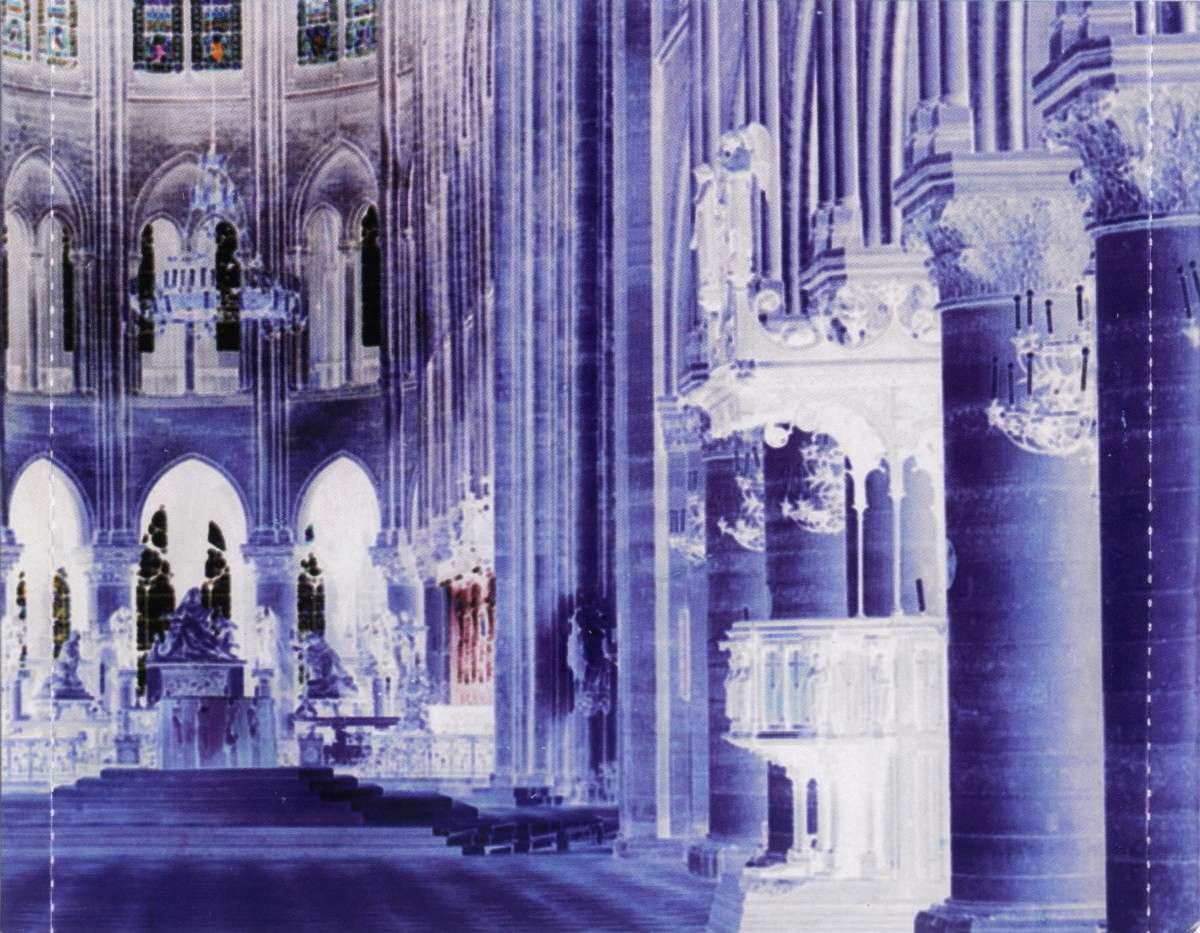The Mystery of Notre-Dame. Chant & Polyphony / Orlando Consort
Plainchant and organum from the Magnus liber organi
for the Feast of St. Stephen, Easter and the Assumption of the Blessed Virgin Mary
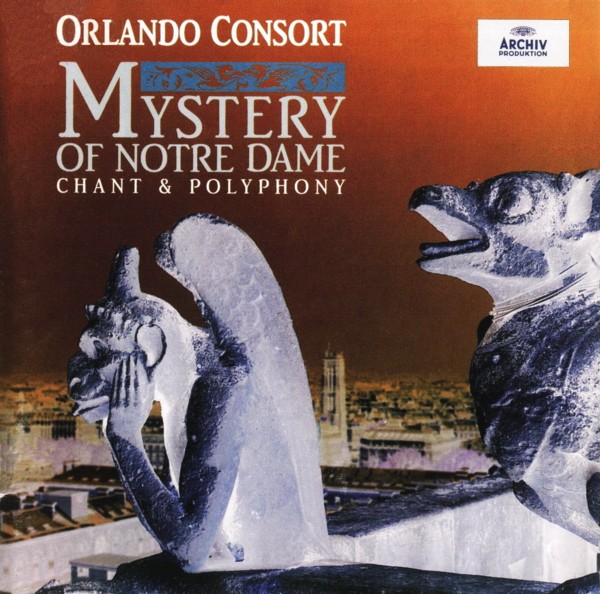
medieval.org
Archiv 453 487
1997
Easter
1. Pascha nostrum immolatus [1:45]
Communion
2. Et valde mane una sabbatorum à 2 [10:27]
Matins responsory
3. Victimae paschali laudes [2:25]
Sequence
4. Cristus resurgens — Dicant nunc à 3 [6:06]
Processional Antiphon
Feast of the Assumption of the Blessed Virgin Mary
5. Benedicta à 3 — Virgo, Dei genitrix à 3 [16:09]
Gradual
6. Alleluya à 2 — Assumpta est Maria à 2 [8:06]
Alleluya
7. Beata es, virgo Maria [2:16]
Offertory
Feast of St. Stephen
8. Etenim sederunt principes [4:15]
Introit
9. Sederunt principes à 4 — Adiuva me, Domine à 4 [16:22]
Gradual (PEROTINUS)
10. Alleluya à 2 — Video celos apertos à 2 [6:43]
Alleluya
11. Video celos apertos [1:32]
Communion
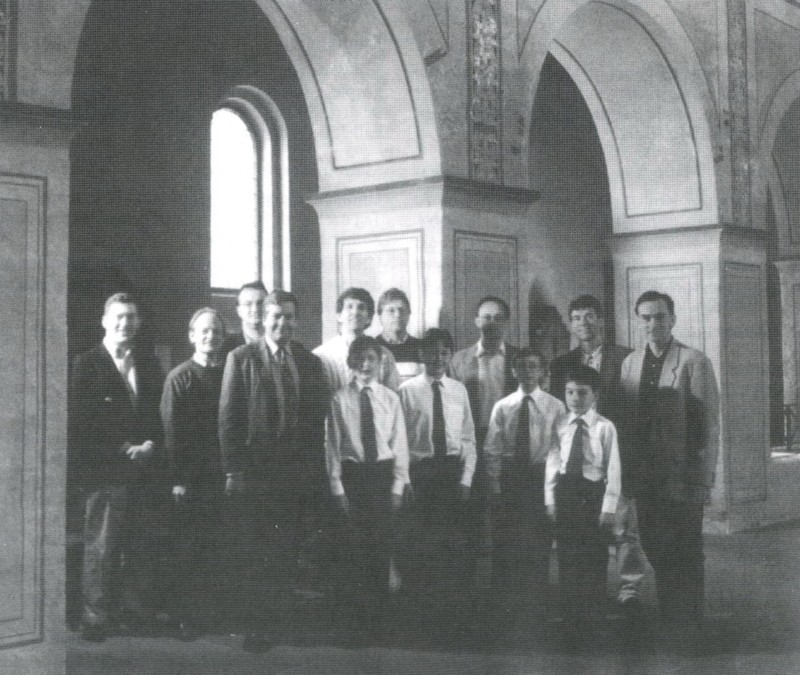
ORLANDO CONSORT
Robert Harre-Jones — alto | director of plainchant
Charles Daniels — tenor • Angus Smith — tenor
Donald Greig — baritone
with Simon Berridge — tenor
Plainchant:
Choristers of Westminster Cathedral Choir
Gerald Beatty • Matthew Davies • Benedict Durbin • Dominic Walker — trebles
Master of Music: James O'Donnell
Stephen Charlesworth • Charles Pott — baritones
Michael McCarthy • Julian Clarkson — basses
DDD 4D
Recording: Mandelsloh (Neustadt), St. Osdag Kirche, 5/1996
Executive Producer: Dr. Peter Czomyj
Recording Producer: Arend Prohmann
Tonmeister (Balance Engineer): Gregor Zielinsky
Recording Engineer: Reinhild Schmidt
Editing: Oliver Rogalla
Editions: Prof. Mark Everist. The music appears in vols. 1-4 of Le Magnus liber organi de Notre Dame de Paris, 7 vols. (Monaco: Editions de l'Oiseau Lyre, 1994)
P 1997 Deutsche Grammophon GmbH, Hamburg
C 1997 Deutsche Grammophon GmbH, Hamburg
Complete art work by Seib Werbeagentur, Hamburg
Illustration "Ile de la Cite" • Bibliothèque historique de la Ville de Paris
Artist Photos: Suzie Maeder (Orlando Consort) · Joachim Rilhl (Mandelsloh)
Art Direction: Lutz Bode
Printed in Germany by/ Imprimé en RFA par Münstermann, Hannover
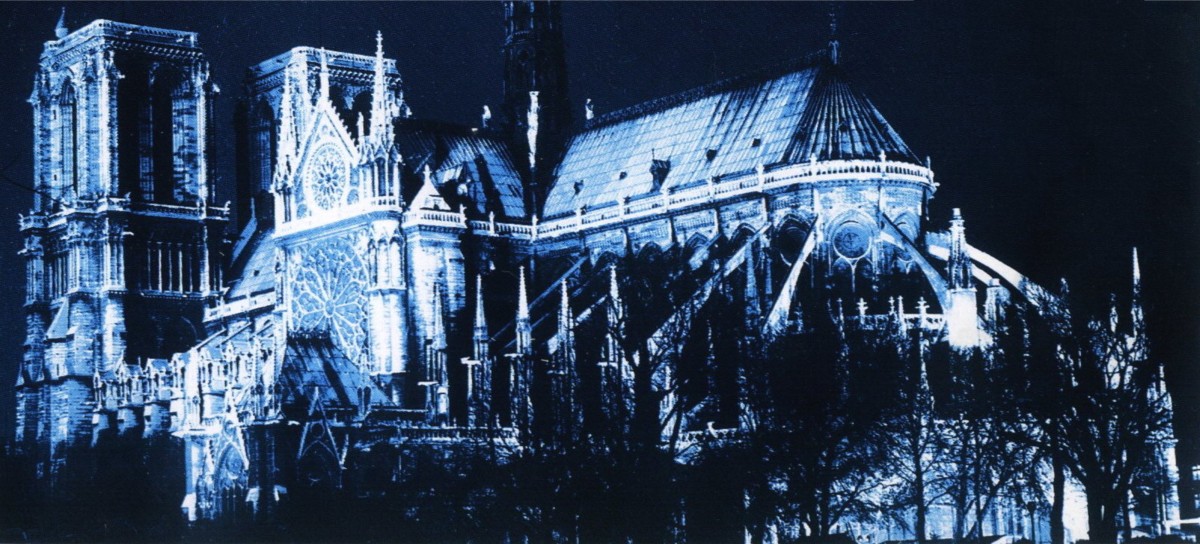
NOTRE DAME POLYPHONY
The history of late 12th-century polyphony was first written a hundred years after the
event
by a monk who may have come from the Abbey of Bury St. Edmunds; the
past has not entrusted us with his name and he is usually referred to by
the title he received when his treatise was first published in the 19th
century: Anonymous IV. Anonymous as he was, he tells us about two of
the most important composers of the fifty years either side of 1200: the
magistri Leoninus and Perotinus. Leoninus, we are told, wrote a
cycle of two-part settings of the most important chants in the
liturgical year - Christmas, Easter, Assumption and other feasts; this
cycle was called the Magnus liber organi - the great book of
organum. Perotinus and his contemporaries played an important role in
the careful recasting and elaboration of this repertory. According to
the monk from Bury St. Edmunds, Perotinus either shortened or edited
(interpretations vary) Leoninus' great book of organum; long sections of
almost improvisatory scope were rewritten according to the tighter
principles of discant composition that Perotinus himself may have
contributed to codifying. Perotinus wrote organa in three and four parts, and Anonymous IV mentions two works by name: Sederunt principes
is one of these. Both Leoninus and Perotinus worked at the Cathedral
Church of Notre Dame de Paris; while little is conclusively known about
the biography of Perotinus, recent fashion has inclined to identify
Leoninus with Leo, a canon of Notre Dame in
later life and, incidentally, an author of neo-Ovidian homoerotic poetry.
Musical
contributions to the liturgy at the Cathedral Church of Notre Dame were
of two types: monophony (liturgical chant) and polyphony (organum).
Routine celebration of the Mass and Office was accompanied by a number
of plainsong items; in addition to the Ordinary of the Mass, each feast
was marked out by its Proper liturgical chants: introit, gradual,
alleluya, sequence, offertory and communion (for the Mass) and
responsories (for the Office) During the last third of the twelfth
century, Leoninus and Perotinus selected some of these chants for
reworking in polyphony; Leoninus and his generation composed in two
parts (organum duplum) while Perotinus and his colleagues also composed for three and four voices (organum triplum and quadruplum).
Organa of the type that make up Leoninus' Magnus liber organi,
and of the type at which Perotinus and his contemporaries excelled, are
polyphonic settings of plainsong. The original chants employ two
musical styles: the solo sections are elaborately melismatic and
contrast with the simpler, more syllabic, sections sung by the schola. It is the melismatic solo sections of the chant that are set polyphonically. The result is that a performance of organum involves polyphony and plainsong. Sederunt principes and Benedicta
are both graduals and have the overall structure Respond - Verse -
Respond. Within each of these main sections are settings of both solo
and choral chants; the Respond consists of polyphony followed by the
remainder of the chant, and the same pattern is followed in the verse,
and of course in the return of the respond. Usually, the second respond
is simply a repeat of the first one, as in the case of Benedicta; in Sederunt principes, the repeat of the respond is fully written out.
Leoninus' organa dupla of the Magnus liber organi
took the plainsong and did one of two things with it: he laid out the
lowest part (the tenor) in long notes and wrote highly elaborate,
rhapsodic lines above it (the duplum); this style of music was called organum per se (medieval terms vary, and theorists took a pedantic pleasure in pointing out the complexities of usage for a term - organum
- that could mean a complete piece or a generic style or - as here - a
subsection). Alternatively, he took the long melismas of the chant and
organized them into repeating rhythmic cells and wrote a correspondingly
tight rhythmic duplum above it. The rhythmic organization of this procedure gave rise to what are called the rhythmic modes (this style was called discantus).
Both types of music exist within the same composition; the sections
based on highly melismatic chants that use the rhythmic modes are called
clausulae when they are given discrete, self-contained forms.
In some respects, the organa tripla and quadrupla
of the next generation are similar: they take the solo sections of the
chant only, and subject them to a polyphonic treatment. When writing for
three and four voices, however, the composers adopted different
attitudes to rhythm. In the clausulae - as in organum duplum - rhythm and metre are carefully controlled, and the resulting structures are complex and sophisticated. In contrast to organum duplum, the organa tripla and quadrupla
do not adopt such an abruptly different style for the rest of the
polyphony; here, the composers again employ the sustained-tone tenor
(the liturgical-chant in long notes) but now set the two or three upper
voices in the same sorts of rhythmic patterns found in clausulae
- in other words, patterns where rhythm and metre were strictly
controlled. The result is a composition in which the performative
flexibility of organum duplum is banished but one in which the composer can fix musical ideas with precision and durability.
The
Orlando Consort have selected music from three of the major feasts from
the liturgical year: Easter, the Assumption of the Blessed Virgin Mary
and the Feast of St. Stephen (26 December). They have merged this focus
on three feasts with a range of liturgical items: introit, gradual,
alleluya, offertory, communion, responsory and processional antiphon,
and offer a range of musical styles: plainsong, organum duplum, triplum and quadruplum.
It used to be thought that the sustained notes in organum duplum
were to be held relentlessly: a challenge to breath control and the
sanity of the singer taking the part. Re-readings of 13th-century theory
suggest that the tenor is responsible for contributing with great
subtlety to the texture of the work by breaking the sound, at the same
time as one or more of the upper voices, and this is the procedure that
the Orlando Consort employ in the recording here.
Although the presentation of the upper voices in the three- and four-part works is largely uncontentious, performing the duplum lines in organum per se
is a skill that is difficult to regain at the end of the 20th century.
The music notated in the original manuscripts give a mixture of
information: some idea of what the composer's overall structure might
have been, an idea of at least one (and probably more than one)
performer's view of the music - and it has to be remembered that a
performer's "view" of this music would almost certainly have entailed
changes to pitch and rhythm, and a sense of what a 13th-century editor
would have done in trying to copy down and render consistent a wide
range of material. So these sections which, in their floridity, resemble
late 18th- and early 19th-century coloratura vocal lines, differ in
that they are not just blueprints to be ornamented; they are blueprints
that have already been partially ornamented, and the singer of the duplum
part treads a very careful path between the slavish duplication of a
medieval performer's view of the work and the complete recreation of
Leoninus' music.
The plainsong on this recording is performed by boys and men that formed the basis of the schola,
and is present in every number either in order to complete the
liturgical structure of the individual items or as the single mode of
presentation in liturgical chant; in the case of the monophony, the use
of men and boys serves to contrast the solo and schola sections of the music very clearly.
The
editions of the music used in this recording are taken from the
manuscripts Florence, Biblioteca Medicea-Laurenziana, Pluteus 29.1
(polyphony) and Paris, Bibliothèque nationale de France, fonds latin
1112 (plainsong).
Mark Everist
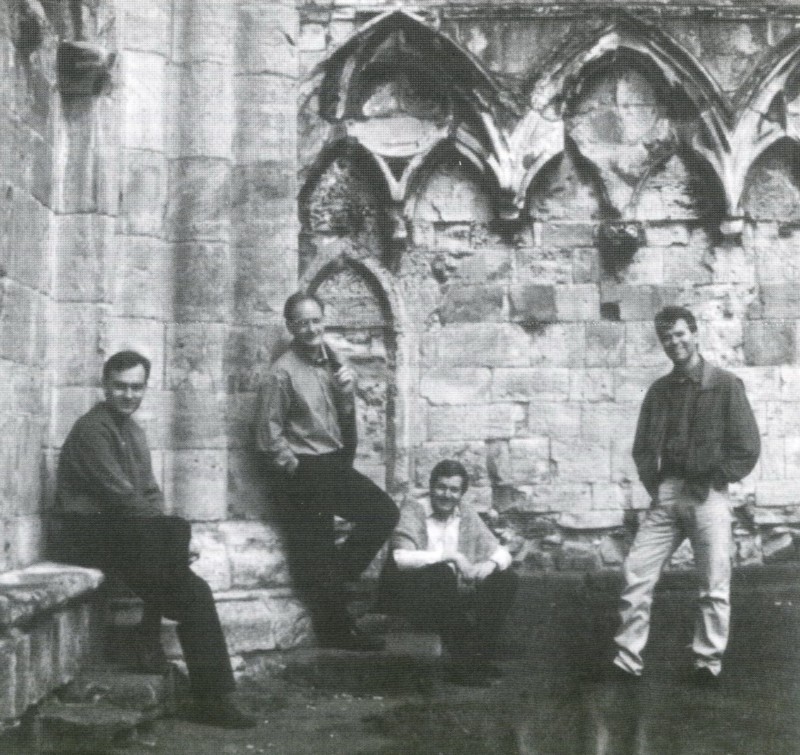
ORLANDO CONSORT
Formed
in 1988, the ORLANDO CONSORT has rapidly achieved a reputation as one
of the most accomplished and challenging groups performing repertoire
from the 11th to the 15th centuries. All the singers in the group are
established soloists and have appeared frequently with groups such as
the Tallis Scholars, and the Gabrieli and Taverner Consorts.
Collaborating
with leading academics on music that has rarely if ever
been performed in modem times, they have set new standards of
performance, particularly with regard to the tuning and pronunciation of
their chosen repertoire.
The Orlando Consort gave
highly-acclaimed concerts at the Utrecht Early Music Festival in 1989,
1990 and 1996. In 1991 and 1995 the group undertook extensive tours for
both the British and Dutch Early Music Networks. The Consort has
appeared in festivals in Belfast, York, Brinkburn, Santander, Antwerp,
Bruges, Berlin, Cologne, Frankfurt, Prague, Graz and Padua, as well as
in the USA and Canada. They were artists-in-residence at Queen's
University, Belfast, for the academic year 1993-94, and in 1996 received
the Noah Greenberg Award of the American Musicological Society. Their
recording of sacred choral works by Dunstable won the Gramophone's Early
Music award in 1996.
The present recording is the second the
group has made since signing an exclusive contract with Deutsche
Grammophon /Archiv Produktion in 1996; the first was of Ockeghem's Missa
"De plus en plus" and a selection of his chansons (DG 453 419-2).
Future projects include a recording of chansons by Machaut.
The School of Notre Dame / Orlando Consort
LÉONIN • PEROTIN
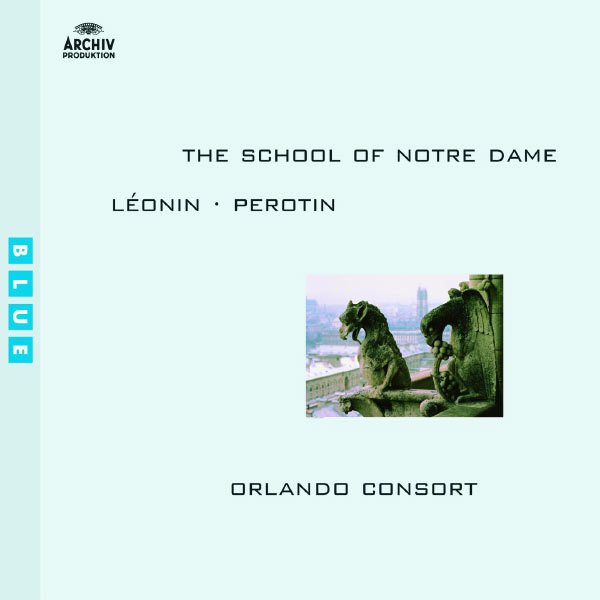
medieval.org
Archiv 477 5004
2004
CATHEDRAL VOICES
THE ORLANDO CONSORT SINGS MUSIC FROM THE "MAGNUS LIBER ORGANI"
In
1163 Pope Alexander III laid the foundation stone for a building that
was to be one of the most daring of all medieval edifices: the Cathedral
of Notre Dame in Paris remains a miracle of ecclesiastical
architecture, its interior and exterior impressing the observer equally
with their powerful and yet seemingly weightless appearance. The work of
several architects, the cathedral took almost a century to build, a
timescale that is in delightful contrast with the unity of its overall
impression.
Even before the building work was complete, a
further, audible change had taken place within the cathedral, a change
that marked a sudden and decisive development in polyphonic music and
that was brought about in particular by the two leading musicians at
Notre Dame, Leoninus and Perotinus. Thanks to these two composers, the
newly built cathedral became the focus of a musical revolution far
greater than anything previously known. If we are able to trace this
development today, more than eight hundred years later, we owe this in
part to the labours of musicologists, but also and above all to
ensembles that have specialized in performing this music and in that way
brought these scholarly discoveries to life. There is no doubt that the
Orlando Consort is one of the most progressive groups of its kind.
Through their association with musicologists and their regular
appearances at early music concerts, this four-man ensemble has set
standards of performance practice that others have striven to emulate.
In particular, their interpretations are characterized by sensitivity to
matters of intonation and pronunciation. After such a lengthy period of
time, today's audiences can gain access to this fascinating music only
if its interpreters allow us to experience its spiritual content, too.
And it is very much this that sets the Orlando Consort apart from other
early music ensembles. As the Gramophone critic wrote in 1997
on the occasion of the group's first release on the Deutsche Grammophon
label, "they sing with such refined intonation that the music is
irresistible". That this music would ever be described as "irresistible"
is something that earlier generations of musicologists would never have
thought possible.
The Orlando Consort owes its success not just
to its refined intonation but also to its diction: its French
pronunciation of the Latin words colours the liturgical text and invests
it with that lean-toned character that recalls Gothic pillars soaring
skywards. Synaesthetic impressions of this kind were by no means unknown
in the early Middle Ages, for richly ornamented melismas in the solo
sections were clearly intended to carry an additional layer of meaning.
The Orlando Consort has found a way of performing early polyphony so
that it constitutes a positively sensual veneration of God.
The
interpretation of the organa dupla — two-part settings — demands a skill
on the part of the performers that consists not just of vocal technique
but also of an ability to imbue the text with meaning, for the original
notation offers only hints at what the composer may have intended in
terms of musical texture. As a result, today's singers have the task of
putting themselves in the position of singers from the Middle Ages and
at the same time fathoming the practices associated with 12th-century
notation. All of this demands a considerable intellectual effort to come
to terms with the spirituality of the period. The upper part of the
duplum will succeed only if the singer knows what he is doing from a
stylistic point of view: modal rhythm must be understood, and the often
rhapsodical melodic lines must be meaningfully structured and related to
the tenor line beneath them. To achieve this requires the singer to
perform a tightrope walk between merely imitating his medieval
counterpart and attempting to breathe life into the notated musical
texture. The Orlando Consort has won awards not least for its ability to
invest the music it performs with a very real sense of spirituality.
The
complex nature of the music written for Notre Dame emerges above all
from the three- and four-part pieces in which the singers Robert
Harre-Jones, Charles Daniels, Angus Smith and Donald Greig use their
voices to create an apparently endless sense of space. Clearly intoned
intervals and melismas convey a feeling of the solemnity that reflects
the liturgical occasion. The singers have chosen liturgies from three of
the Church's main festivals: Easter, the Assumption of the Blessed
Virgin Mary and the Feast of the protomartyr St Stephen on 26 December.
The undoubted high point of the ensemble's interpretation is their performance of Perotinus's Sederunt principes,
which was written for the liturgy of the Feast of St Stephen. This
four-part gradual follows a monophonic introit and reveals the whole
richness of the musical texture: the solo section of the previous
chorale is polyphonically reworked, the tenor now being entrusted with
the extended chorale melody, while the three upper voices accompany it
with their melismatic lines. The modal rhythm of these upper voices is
fixed, in which respect it differs from that of the two-part organum.
The performers are thus denied some of the spontaneity that the duplum
offers its singers, but instead we have a chance to hear the composer's
precise instructions realized. More than eight hundred years after these
fascinating polyphonic pieces were written, the lean-toned cathedral
voices of the four members of the Orlando Consort create the impression
of messengers opening up a remote and unknown world to us for the very
first time.
Ulrike Brenning
(Translation: Stewart Spencer)

IM KLANG DER KATHEDRALE
DAS ORLANDO CONSORT SINGT AUS DEM »MAGNUS LIBER ORGANI«
Im Jahre 1163 legte Papst Alexander III. den Grundstein für einen
Kathedralenbau, der zu den mutigsten Entwürfen der
mittelalterlichen Architektur werden sollte: Die Kathedrale Notre-Dame
zu Paris ist noch heute ein Wunderwerk des Kirchenbaus. Außen wie
innen beeindruckt sie durch ihre gewaltige und dennoch schwerelos
wirkende Erscheinung. Trotz ihrer fast 100 Jahre währenden Bauzeit
unter der Leitung verschiedener Baumeister bietet sie ein reizvoll
geschlossenes Gesamtbild.
Während dieser Zeit, als die Arbeiten noch nicht vollendet waren,
vollzog sich im Innern der Kirche bereits eine weitere, eine akustische
Revolution. Sie markiert eine sprunghafte Entwicklung der polyphonen
Musik, namentlich vorangetrieben durch Leonin und Perotin, die
führenden musikalischen Köpfe an Notre-Dame. Die eben neu
gegründete Kathedrale wurde durch sie zum Mittelpunkt eines
musikalischen Wirkens von weit größerer Intensität als
je zuvor. Dass wir das umwälzende Geschehen heute, mehr als 800
Jahre später, nachvollziehen können, verdanken wir einerseits
der Musikwissenschaft, andererseits aber vor allem Ensembles, die sich
auf diese Musik und ihre Ausführung spezialisiert haben und so die
wissenschaftlichen Erkenntnisse erst in eine sinnlich erfahrbare Form
bringen.
Zu den avanciertesten Ensembles dieser Art zählt zweifelsohne das
Orlando Consort, ein erstklassiges Männer-Vokalquartett. Durch die
enge Zusammenarbeit mit Musikwissenschaftlern und die rege Teilnahme an
Akademien für Frühe Musik setzt das Orlando Consort
Maßstäbe für die Aufführungspraxis, vor allem in
der Klanggestaltung und der Sprachbehandlung dieser faszinierenden
Musik. Sie kann sich einem Publikum nach so langer Zeit nur
erschließen, wenn es den ausführenden Sängern gelingt,
auch den geistigen Kontext dieser Musik wieder erlebbar werden zu
lassen. Und eben dies zeichnet das Orlando Consort auf ganz besondere
Art und Weise aus — »they sing with such refined intonation
that the music is irresistible«, urteilte der Rezensent der
Zeitschrift Gramophone 1997 anlässlich der Ersteinspielung bei der
Deutschen Grammophon. Dass diese Musik eines Tages als
»unwiderstehlich« bezeichnet werden würde, daran
hatten nicht einmal Generationen von Musikwissenschaftlern geglaubt.
Zur verfeinerten Intonation darf man auch die Diktion des Textes
zählen: Die französische Aussprache des Lateinischen
färbt den liturgischen Text und verleiht ihm jenen schlanken
Charakter, der an hoch aufstrebende gotische Säulen denken
lässt. Synästhetische Verschmelzungen dieser Art waren dem
frühen Mittelalter nicht fremd; bei reich ausgeschmückten
Melismen der Solo-Abschnitte war eine weitere Bedeutungsebene durchaus
intendiert. Das Orlando Consort versteht es, die frühe
Mehrstimmigkeit als sinnliche Verehrung Gottes vorzutragen.
Die Gestaltung der zweistimmigen Gesänge, der organa dupla,
verlangt von den ausführenden Sängern eine Geschicklichkeit,
die sich aus stimmlichem Können und inhaltlicher Durchdringung
zusammensetzt, denn die originale Notation bietet nur Anhaltspunkte
dessen, was sich der Komponist als Struktur gedacht haben könnte.
So fällt dem Sänger heute die Aufgabe zu, sich in den
Sänger des Mittelalters zu versetzen und darüber hinaus den
Gepflogenheiten der Notation im 12. Jahrhundert nachzuspüren; das
erfordert eine starke innere Auseinandersetzung auch mit der
Geistigkeit jener Epoche. Die Oberstimme des Duplum gelingt nur, wenn
der Sänger eine große Stilsicherheit in der Gestaltung
besitzt: Es müssen rhythmische Modi erfasst, die oft rhapsodischen
Melodielinien sinnvoll gegliedert und mit dem darunter liegenden so
genannten »tenor« klanglich verbunden werden. Es ist dies
eine Gratwanderung zwischen der Imitation eines mittelalterlichen
Sängers und dem Versuch einer Wiedererweckung der aufgeschriebenen
musikalischen Struktur. Nicht zuletzt für die geistige
Durchdringung der von ihnen aufgeführten Musik hat das Orlando
Consort renommierte Preise erhalten.
Die Komplexität der Musik an Notre-Dame kommt vor allem in den drei- und vierstimmigen Sätzen
zur Geltung, in denen die Sänger Robert Harre-Jones, Charles Daniels, Angus Smith und Donald
Greig mit ihren Stimmen eine unendlich wirkende Weite des Raumes
erzeugen. Klar intonierte Intervalle und Melismen vermitteln jene
Feierlichkeit, die dem liturgischen Anlass entspricht. Liturgien
für drei Hochfeste des Kirchenjahres haben die Sänger
ausgewählt — Ostern, Mariae Himmelfahrt und das Fest des
Erzmärtyrers Stephanus (26. Dezember).
Den Höhepunkt stellt die Interpretation des Sederunt principes von
Perotin dar, geschrieben für die Liturgie des Festtages des
heiligen Stephanus. Nach dem einstimmigen Introitus folgt dieses
vierstimmige Graduale und offenbart den ganzen Reichtum der
musikalischen Struktur: Der Solo-Abschnitt des vorausgegangen Chorals
erscheint in einer mehrstimmigen Bearbeitung, in welcher der
grundlegende Part (tenor) die weit ausgedehnte Choralmelodie
vorträgt, welche die drei Oberstimmen in melismatischen Linien
umranken. Die rhythmischen Modi dieser Oberstimmen sind — anders
als im zweistimmigen Organum — genau festgelegt. Die
Spontaneität der Ausführung, wie sie das Duplum den
Sängern bietet, ist hier zwar nicht gegeben, aber wir haben die
Möglichkeit, die präzisen Angaben des Komponisten hörend
nachzuvollziehen. Über 800 Jahre nach der Entstehung dieser
faszinierenden Mehrstimmigkeit wirken die schlanken
»Kathedral-Stimmen« der vier Sänger des Orlando
Consorts in diesem Zusammenhang wie Boten, die erstmals eine ferne,
unbekannte Sphäre erschließen.
Ulrike Brenning
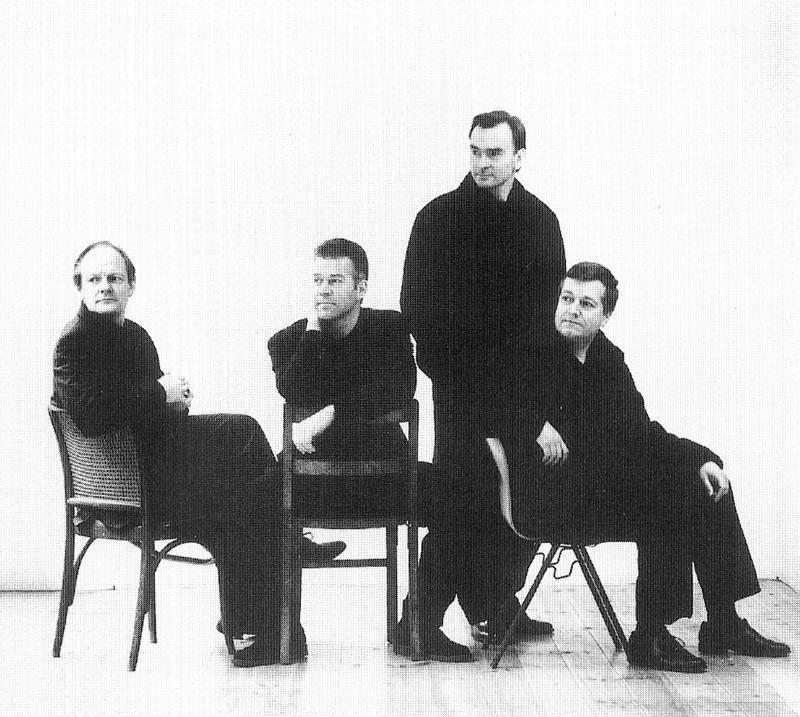
DDD
Recording: Mandelsloh (Neustadt), St. Osdag Kirche, 5/1996
Executive Producer: Dr. Peter Czornyi
Recording Producer: Arend Prohmann
Recording Engineer: Reinhild Schmidt
Editing: Oliver Rogalla
Editions: Prof. Mark Everist: The music appears in vols. 1-4 of Le
Magnus fiber organi de Notre Dame de Paris, 7 vols. (Monaco:
Editions de l'Oiseau Lyre 1994)
Booklet Editor: Eva Zöllner
P 1997 Deutsche Grammophon GmbH, Hamburg
© 2004 Deutsche Grammophon GmbH, Hamburg
Orlando Consort: © Marco Borggreve / DG
Cover Photo: © zefa visual media / J.A. Kraulis
Art Direction: Nikolaus Boddin
Printed in the E. U.
